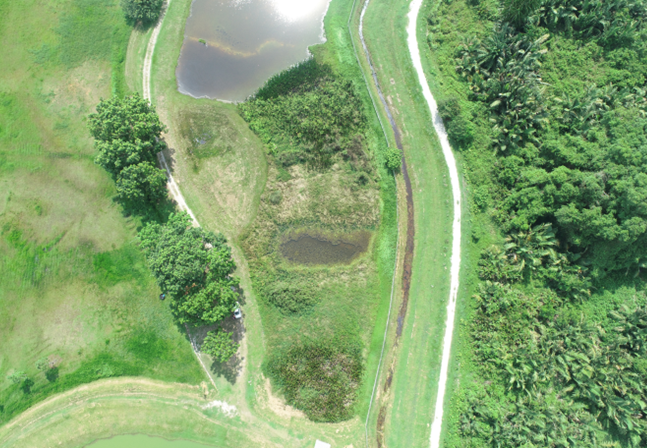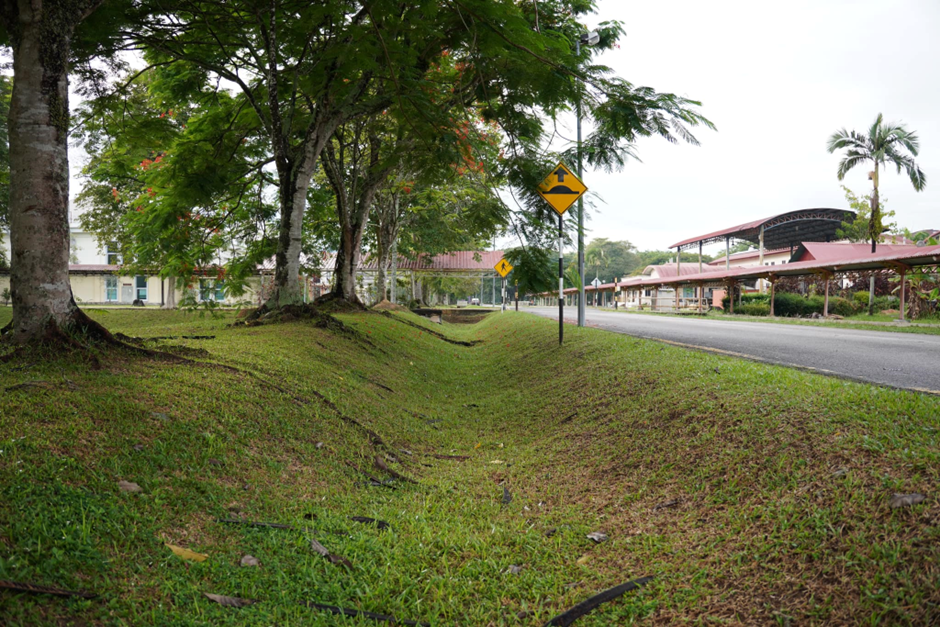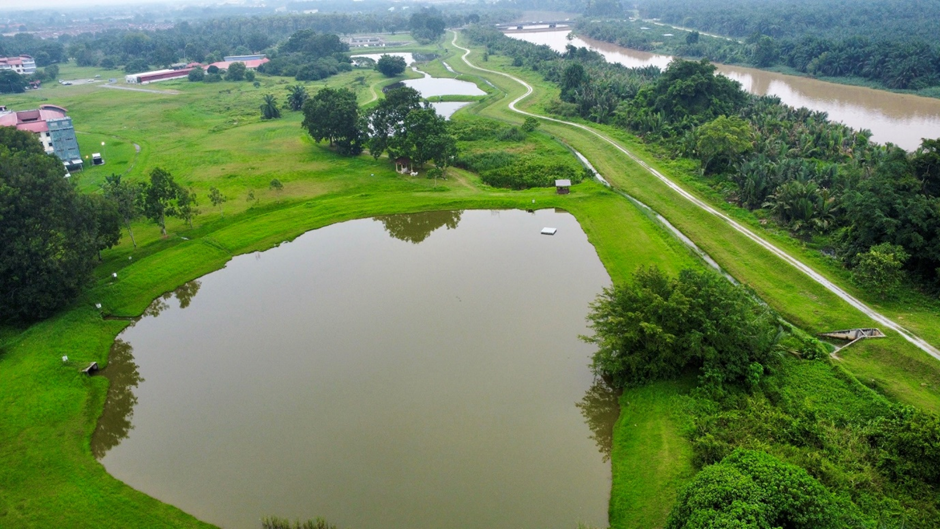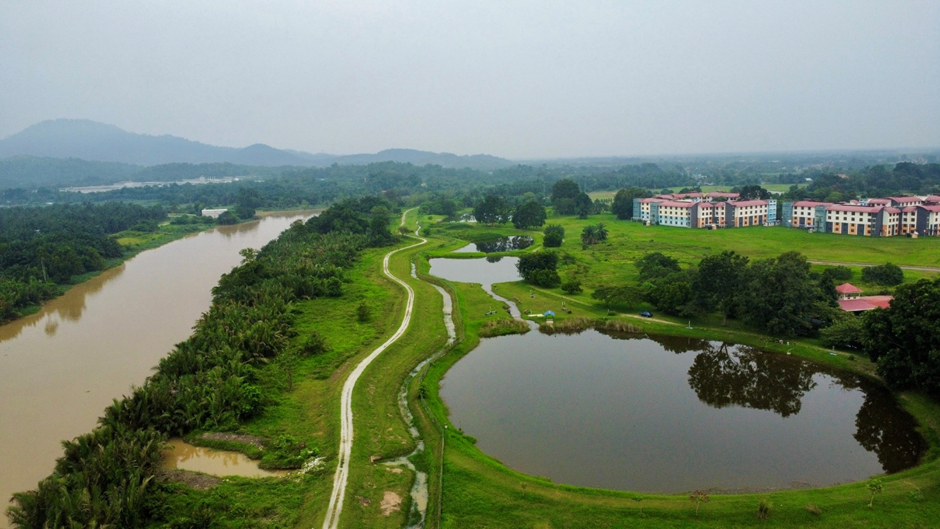BIOECODS FOR AQUATIC ECOSYSTEM
BIOECODS: Plan to Minimize Changes in Aquatic Ecosystems
The BIOECODS system is designed with a comprehensive plan to minimize physical, chemical, and biological alterations to aquatic ecosystems. This is achieved through the integration of natural and engineered components that work together to restore and maintain ecological balance in urban environments. Key elements of this plan include:
- Constructed Wetlands: These wetlands serve as biological filters, treating stormwater by mimicking natural ecosystems. They help trap sediments and pollutants, while promoting the breakdown of organic matter and nutrients through wetland vegetation and microorganisms. This reduces the chemical impact of pollutants such as excess nutrients and harmful substances before the water is discharged into natural water bodies.

Constructed Wetland
- Ecological Swales: These vegetated channels slow down surface runoff, allowing water to infiltrate into the ground. By doing so, they reduce the physical impact of rapid runoff, which can cause erosion and disrupt habitats. Ecological swales also help filter out suspended solids and pollutants, maintaining the chemical integrity of downstream ecosystems.

Ecological Swale
- Detention and Wetponds: Both detention and wetponds are designed to manage stormwater by temporarily holding water, allowing sediments to settle, and reducing the physical disturbance to downstream ecosystems. Detention ponds are particularly effective in controlling peak flows, reducing the risk of flooding, while wetponds enhance biological treatment through natural processes such as sedimentation and nutrient uptake by aquatic plants, further improving water quality.
 Detention pond
Detention pond
The integration of these components within the BIOECODS system creates a holistic approach to stormwater management, addressing the physical, chemical, and biological impacts of urban runoff. The system is designed not only to control water quantity, preventing flooding, but also to enhance water quality and support biodiversity. By doing so, it minimizes ecosystem degradation and ensures that urban development has a reduced impact on natural water bodies.
BIOECODS operates in alignment with the MSMA guidelines (Urban Stormwater Management Manual for Malaysia), which emphasize managing stormwater at the source. The multi-stage treatment provided by BIOECODS—through constructed wetlands, ecological swales, detention ponds, and wetponds—significantly reduces pollutants and minimizes alterations to aquatic ecosystems, ensuring that water discharged from urban areas is cleaner and less harmful.
BIOECODS: Watershed Management Strategy for Aquatic Biodiversity
The BIOECODS project at Universiti Sains Malaysia (USM) is a location-specific watershed management strategy, particularly designed for the Kerian River watershed. This strategy is grounded in the understanding of the unique ecological diversity of the aquatic species native to the area, ensuring that stormwater management practices are tailored to the environmental needs of the local ecosystem.
The project integrates a variety of stormwater management techniques aimed at preserving and enhancing aquatic biodiversity. Key components include:
- Constructed Wetlands: These wetlands are designed not only to treat stormwater but also to provide a habitat for native aquatic species. The carefully selected wetland plants promote natural water filtration while offering shelter and food sources for fish, invertebrates, and other aquatic organisms. This creates a thriving ecosystem that supports the biodiversity specific to the Kerian River area.
- Detention and Wetponds: These features help regulate water flow, reducing the likelihood of sudden floods that can disrupt the natural habitats of aquatic species. By controlling peak flows and gradually releasing water, the detention and wetponds maintain stable water levels that mimic natural conditions, providing a more consistent environment for the aquatic species to flourish.
- Ecological Swales: In addition to managing stormwater, ecological swales provide natural corridors for wildlife, particularly amphibians and invertebrates, which are crucial components of the aquatic food web. These swales are designed to slow down water flow, promote infiltration, and improve water quality, all of which benefit the species within the watershed.
The location-specific approach of BIOECODS ensures that the diverse needs of the local aquatic species are taken into consideration at every stage of the stormwater treatment process. By addressing both the physical and ecological requirements of the watershed, the project not only improves water quality but also enhances the habitat conditions necessary for maintaining the biological diversity of the Kerian River.
This strategy aligns with the MSMA guidelines (Urban Stormwater Management Manual for Malaysia), focusing on the sustainable management of stormwater while preserving and enhancing the ecological integrity of the local environment. By integrating wetlands, ponds, and swales into the watershed management plan, BIOECODS serves as a holistic model for other regions looking to balance urban development with the conservation of aquatic species
 Sungai Kerian and BIOECODS System
Sungai Kerian and BIOECODS System